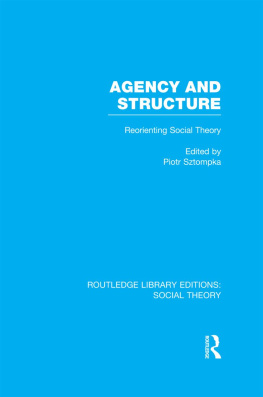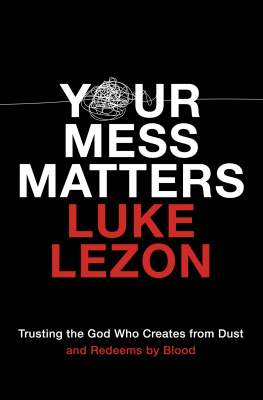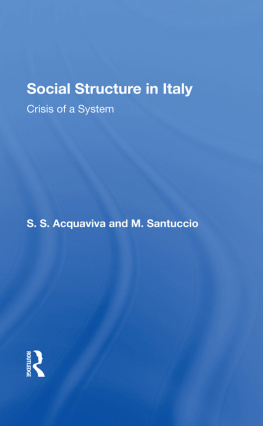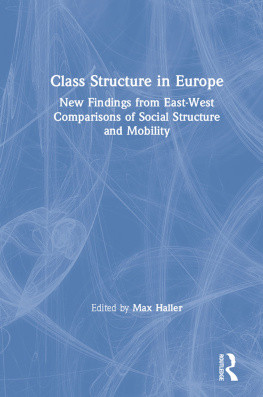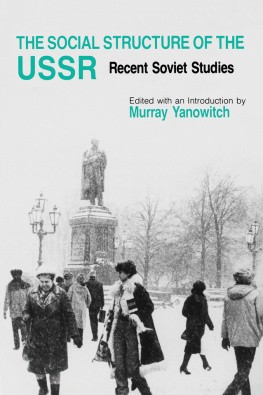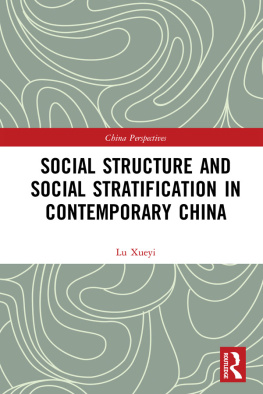Routledge Revivals
Social Structure
Originally published in 1942, during the Second World War and a time of great social and economic upheaval, Henry A. Mess endeavours to give a succinct account of the main elements in social structure and of their interrelations. He offers discussions on such broad topics as human nature, the role institutions play in society, and warfare as a universal feature of societies. This title is a short and accessible introduction to sociology and will be of value to students interested in the subject.
Social Structure
Henry A. Mess
First published in 1942
by George Allen & Unwin, Ltd.
This edition first published in 2016 by Routledge
2 Park Square, Milton Park, Abingdon, Oxon, OX14 4RN
and by Routledge
711 Third Avenue, New York, NY 10017
Routledge is an imprint of the Taylor & Francis Group, an informa business
1942 Henry A. Mess
All rights reserved. No part of this book may be reprinted or reproduced or utilised in any form or by any electronic, mechanical, or other means, now known or hereafter invented, including photocopying and recording, or in any information storage or retrieval system, without permission in writing from the publishers.
Publishers Note
The publisher has gone to great lengths to ensure the quality of this reprint but points out that some imperfections in the original copies may be apparent.
Disclaimer
The publisher has made every effort to trace copyright holders and welcomes correspondence from those they have been unable to contact.
A Library of Congress record exists under LC control number: a 43000275
ISBN 13: 978-1-138-19166-2 (hbk)
ISBN 13: 978-1-315-64033-4 (ebk)
SOCIAL STRUCTURE
by
Henry A. Mess
B.A., Ph.D.
Reader in Sociology in the University of London
First published in 1942
The Typography (and Binding) of this book conforms to the Authorized Economy Standard.
All rights reserved
Printed in Great Britain by
Henderson & Spalding, London, W.1.
CONTENTS
I HAVE endeavoured to give succinctly an account of the main elements in social structure and of their interrelations. The subject is treated for the most part statically, and it is my intention to write in a later volume about the processes of social change.
No one can read or write much sociology without becoming aware of the present unsatisfactory state of its terminology, which is both deficient and also inconsistent in usage. I have made some innovations which I hope will commend themselves to my readers.
I wish to express my gratitude to Dr. H. B. Acton for very useful comments on the draft of , and to Miss J. W. Armitage for assistance in proof-reading and in indexing.
H. A. M.
BEDFORD COLLEGE,
March, 1942.
WHEREVER there are men they are found to be living in societies. The simpler peoples, such as the Eskimos, or the Veddahs, or the Andaman Islanders, are commonly found in small groups, which may range in size from thirty or forty to a few hundred individuals. But for the most part human societies are larger than that. It is true that there may be found individuals who have lived with very little contact with other human beings; there are many well-authenticated stories of children who have been carried off and reared by wild animals; there are other well-authenticated stories of children reared in solitary confinement; and there are adults who become separated from their kind, castaways and prisoners and recluses. But such men and women are exceptional, and usually they appear to be damaged by solitude. In the case of those individuals who have been carried off in childhood there is always, for obvious reasons, defective development; to become a human being, in any adequate sense of that term, it is not sufficient to have been born of human stock, it is also necessary to have grown up in a human society and to have been subjected to its influences.
Those influences are of many kinds and of great power. The ordinary man does not, as a rule, realize the extent to which his thinking, his feeling, and his behaviour are likely to be social products. It seems to him that he thinks and that he feels as he does because it is natural and right to think and to feel in those ways, and that he behaves as he does because he has chosen so to behave. But a little reflection will show that most of us, indeed all of us, are to a large extent what we are because we belong to particular societies and to particular groups within those societies. It is obviously not fortuitous that most Arabs are Mohammedans, that most Cinghalese are Buddhists, that most Italians are Roman Catholics, that most Danes are Lutherans. The individual Arabs, Cinghalese, Italians, and Danes have not, with rare exceptions, thought out carefully the meaning of life and weighed the evidence for the truth or falsity of their own and other religions. If you or I had been Arabs or Danes, we should probably have been Mohammedans or Lutherans; it is the fact that we have been born and brought up in England, and not any reasoned and deliberate choice, which makes us non-Mohammedan and non-Lutheran. Even within this country the results of local group influence are observable; Methodists are plentiful in Cornwall but scarce in Scotland, whilst the reverse is true of Presbyterians. We do not conclude that most Cornishmen, on careful review of the evidence and arguments, prefer the dogmas and the polity of Methodism, and reject those of Presbyterianism, whilst Scots arrive in large numbers at opposite conclusions. We know perfectly well, when we take the trouble to think, that the majority of Cornishmen or of Scots are Methodists or Presbyterians by virtue of birth rather than by virtue of rational choice.
Or to take another example from the realm of politics: the facts about the War of 19141918 have been very differently perceived and interpreted by Britons, Frenchmen, Germans, Italians, and Americans. Germans, with few exceptions, took one view; Frenchmen, with few exceptions, took another view. Most Britons thought that the war was won mainly by the initial resistance on the Marne and by the pressure of the British Navy. Most Americans would say that American intervention saved the Allies. In Italian schools and in Italian history books the battle of Vittorio Veneto, scarcely known to most Englishmen, is looked upon as the turning point. Quite clearly, thought on the subject of that war is to a large extent a group product. Imagine an infant, let us say of neutral birth, adopted by a French family in 1900, or alternatively by a German family, he or she would pretty certainly think and feel differently to-day according to the land of adoption. Yet if he or she were unsophisticated, these thoughts and these feelings would seem to him or to her to result inevitably from the facts or from their consequences.
Again, within each social class there will be wide differences of intellect and of temperament and of experience, and these differences will tend to produce differences of outlook on many matters. But with regard to certain matters, such as in our own land and time, the control of industry and the division of the product of it, there is likely to be a fairly sharp contrast of views. Most members of the working classes will look at such questions in one way, and most members of the owning or managerial classes will look at them in another way. Those who live in Kensington do not for the most part think as do the majority of the inhabitants of Poplar; the people of Wigan and of Jarrow are likely to think otherwise than the people of Cheltenham and of Tunbridge Wells. Membership of a social class conditions much of our political thinking. And it influences our behaviour in many other spheres of life. We may think ourselves free to choose our partners in life, but actually our choice is considerably limited. Dukes son does not marry cooks daughter; King Cophetua and the Beggar Maid is prettier in ballad or in picture than in real life. And this restraint of social class is only one of the many restraints on free intermarriage.







